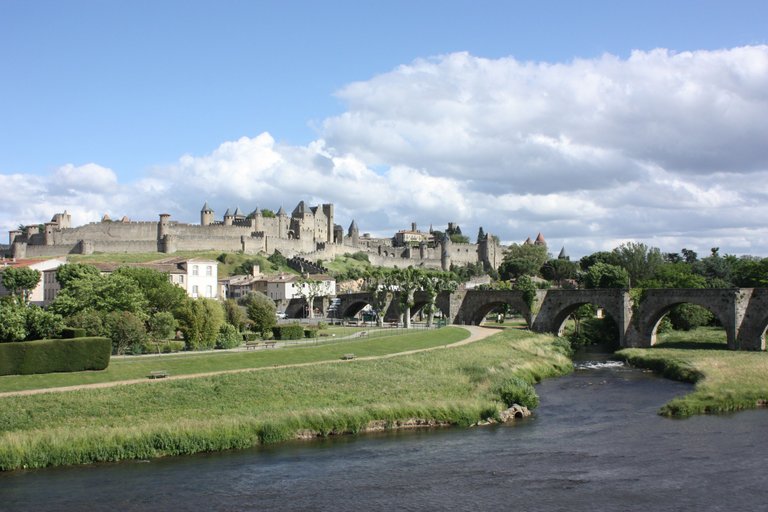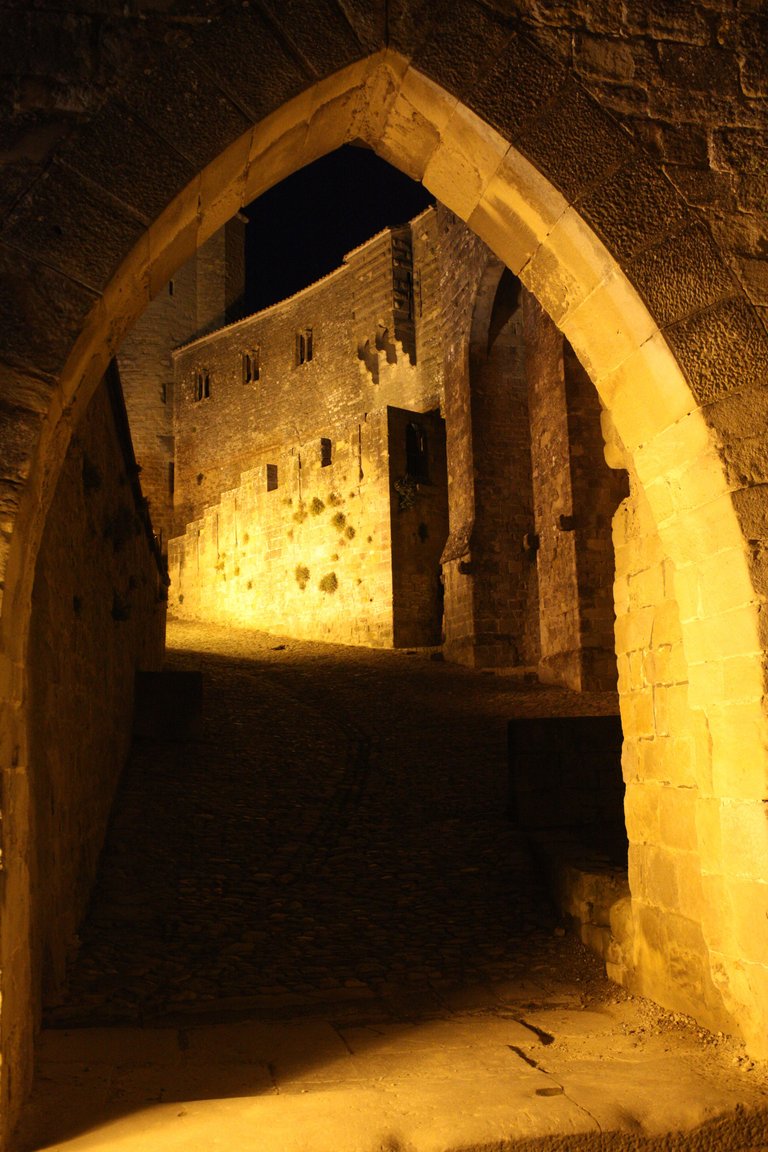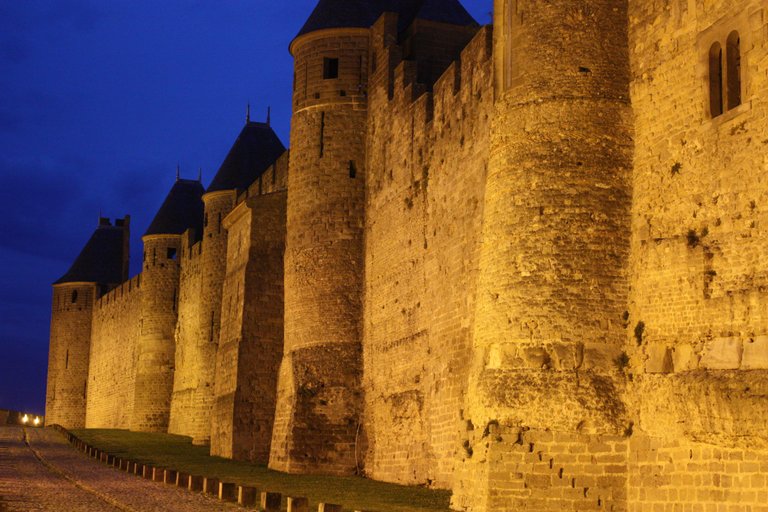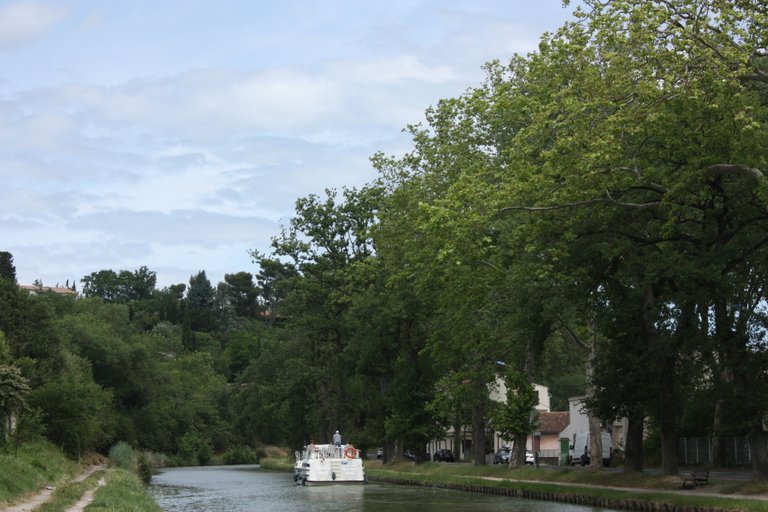Carcassonne is found in the south of France and should be visited by everyone. If you thought all The Crusades went to the Holy Land, think again. Carcassonne and the surrounding areas were ravaged by their very own anti-Cathar crusade in the early 1200s. More of this later, but first a little history of how the town was abandoned and then re-discovered in the 1800s.
As part of the Treaty of the Pyrenees between France and Spain in 1659, France gained Roussillon and Perpignan, parts of Luxembourg and towns in Flanders such as Arras and Béthune. The treaty set the new border with Spain at the Pyrenees and because of this decision Carcassonne’s importance as a military base dwindled rapidly in favour of Perpignan. Carcassonne fell into decay and the Middle Ages fell out of favour.
It wasn’t until the Romantic movement in the early 1830s that people began to notice Carcassonne again. The writer Prosper Merimee wrote appreciatively of the ruins in his 1835 travel memoir Notes d’un voyage dans le Midi de la France and at the same time a local archaeologist Jean-Pierre Cros-Mayrevieille was trying to instigate the reconstruction of his native town.

As luck would have it, the major Gothic Revival architect Eugène Emmanuel Viollet-le-Duc, famous for his interpretive "restorations" of medieval buildings, visited the town and was so enthused by what he saw that he persuaded the Commission of Historical Monuments to undertake the restoration of Carcassonne, starting in 1844. This restoration was of the fortress known as ‘La Cite’.
Today, La Cite of Carcassonne is the largest fortress in Europe. The restoration work of Viollet-le-Duc probably added more towers and fortifications than were originally there, but no visitor really cares about this as Carcassonne is the physical embodiment of what most people imagine a fortified town from the Middle Ages to look like. Within a pair of massive curtain walls stands the Chateau Comtal, the keep in a motte-and-bailey type defensive position. The outer ramparts have 14 towers and are separated from the inner ramparts, with their 24 towers, by the lists or lices, an area where knights could ride horses, practice jousting or crossbow firing, and have archery contests. If an enemy ever breached the outer walls, they would be in open ground without any cover, and would be sitting ducks for any archers on the inner ramparts.
Thankfully, all the modern tourist has to do is enter via the Porte Narbonnaise gate although the number of people around did make me feel like part of an invading army, though a similar amount were coming the other way. My recommendation would be to visit later in the day or even at night when most people have left as the place is well lit and the atmosphere returns to the shadows.

People live in La Cite and there is still a school so it’s not entirely abandoned. During the day, most places in La Cite are busy as the distances are not vast and the attractions are evenly spread around. The quietest parts are probably the lices where I walked with the walls looking down on me. The ‘lices basses’ are between the Porte d’Aude and the Porte Narbonnaise at the northern end of the city. The ‘lices hautes’ run south from Porte Narbonnaise to the Tour St-Nazaire.

Visitors can re-enter La Cite here and visit the Basilica with its 600-year old stained glass windows and remarkable statuary. There’s also an interesting English translation of the House Rules by the entrance to the church, which refers to the “Roman Catholic Cult” and not “Roman Catholic Church”. I wondered whether this was just a mis-translation or whether there was still ill-feeling stretching back to the Albigensian Crusade of 1209 when Pope Innocent III had decreed the Cathar heresy in the Languedoc should be wiped out.
In July of that year, the crusaders had burned Beziers to the ground and killed all the citizens, both Cathar and Catholic, in the process. These crusaders then marched to Carcassonne, which most of them reached on August 1st. La Cite was more fortified than Béziers and better defended, with Raymond-Roger Trencavel, Viscount of Béziers and nephew of Count Raymond VI of Toulouse in command, but its weakness was that it was dependent for water on deep wells within the walls as the River Aude was too far away for the defenders to safely reach. La Cite was full of refugees from the surrounding area, who were well aware of what had happened at Béziers.
The crusaders soon cut off the defenders’ access to the river and then tried to scale the walls on August 4th, but were driven back with heavy casualties. They offered extremely harsh terms for surrender, in return for which Raymond-Roger and 11 companions would be allowed to leave unharmed with as many of their possessions as they could carry. The other inhabitants weren’t mentioned. The offer was rejected and the siege continued.
Morale in the city was evaporating as quickly as the water in the wells, but the greedy crusaders did not want to destroy Carcassonne as they had Béziers. They offered fresh terms. If the city surrendered, the lives of its inhabitants would be spared provided they walked out wearing nothing but their shirts and breeches, leaving everything else for the crusaders. On August 14th, Raymond-Roger Trencavel and nine of his subordinates were given safe conduct to discuss the terms with the besiegers and accepted them, but then, in breach of the safe conduct, Raymond-Roger was seized and chained up (he died in mysterious circumstances in his own prison a few weeks later, aged 24).
The next day Carcassonne surrendered and the citizens, both Catholic and Cathar, left as agreed, ‘carrying nothing but their sins’, in the words of the crusade’s accompanying Cistercian chronicler. What this chronicler didn’t really understand was that the Cathars had effectively renounced worldly goods and letting these ‘heretics’ go was counter to the purpose of the Crusade. The Crusaders had allowed their greed to overcome their duty to the Pope and made them forget the very reasons they were in the south of France.
There are other discoveries to be made outside La Cite. On a Sunday morning a festival took place in the part of Carcassonne on the opposite side of the River Aude from La Cite. A local band was playing medleys of jazz classics with a local audience applauding their efforts appreciatively. The chairs at all the local cafes were mainly full. The tourist board were fully represented too. The fountain at the centre of the square was awash with fruit and vegetables, arranged in beautiful designs with contrasting colours placed next to each other. I believe all the produce, ranging from bananas to kiwi fruit, via tomatoes and peppers, was locally sourced too - a very impressive feat.

Another reason to visit Carcassonne is that the Canal du Midi passes right in front of the train station and there’s a boat basin too where travellers can hire boats and barges to head towards either Sete on the Mediterranean or inland towards Toulouse. Three hundred yards from the station the canal heads in a straight line and photographers can capture the classic vista of boats cruising along the canal framed by trees. Beautiful.
I enjoyed your article, I was born in Carcassonne and spend the first 18 years of my life there. It was a nice remember to read your post, well documented!
Thank you so much - why did you leave?
First because of is a small town and you could not go to the university so I went to Montpellier. Then I discovered Africa and I spend lot of years in some country of this continent.
Really enjoyed this article, thanks for posting it!
You are very welcome.